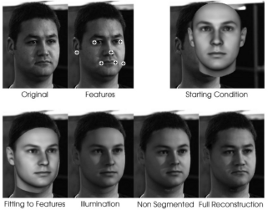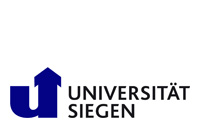
News
DAAD German Academic Exchange Service
D1 Multimodal Face Recognition in the Temporal Domain
Project Leaders
Prof. Dr. Volker Blanz, Prof. Dr.-Ing. Andreas Kolb
Initial Situation
Aims and Work Program
Current methods of facial recognition already deliver satisfactory results under controlled conditions (pose, lighting, facial expressions), but are not very robust under real conditions. In recent years the working group Blanz has examined the influences of pose, lighting, occlusion and resolution and has introduced a series of solution approaches, which are being worked on in the Research Training Group. Another central challenge, however, is the transformation of faces over a period of days, weeks and months. Some years ago already, a first method was introduced for children's face recognition and the simulation of growth over a period of years. This method can be transferred to the aging of adults, whereby some completely new problems arise, as e.g. in the modeling of wrinkles, which go beyond the scope of the linear facial model. The difference that exists between the recognition of known and unknown human faces, is a well researched phenomenon in psychology, although the basic mechanisms are so far unknown. While today mechanical vision can compete with human facial recognition in the case of unknown faces, considerable differences do exist when it comes to known faces. An emulation of learning-based imaging data by a computer vision system can increase recognition capabilities on the one hand, while on the other, at the same time, improving our understanding of human perception. In the working group Blanz, the basics of such technology consist in the form of simultaneous adaptations of a morphable model to several images. The inclusion of hair in the short-term recognition of people (hours up to few days) provide high, so far unused, potential, as shown by the comparison with human perception. The morphable model so far includes no information about hairstyles. With the use of several measuring techniques, especially the utilization of multispectral pictures and active lighting for segmentation, a model of human hairstyles is to be developed based on example data, which then is to be applied together with the face for identification.
 |
 |
| Face reconstruction from a single image. | Processing steps to generate age progressed images of a face. |

